Consumers are seeking to drink more mindfully and regulation now favours lower abvs, too. How are brands reacting?
Mindfulness is not a practice usually associated with British boozers. But a new generation of mindful drinkers are saying no to getting completely hammered. Instead, they favour longer, more compos mentis sessions. And across the alcohol category, brands are innovating and reformulating to satisfy this new trend.
The past year has seen a multitude of launches aimed at longer drinking sessions. In beer, there were big names such as Corona’s Ligera (3.2% abv) and Foster’s Shandy (3%), plus the growth of dedicated mid-strength challenger brands like Small Beer which added a 2.5% stout last autumn.
The trend also extended into wine, where a clutch of brands, from upstarts like Nice to established players such as Concha y Toro, launched lower-strength tipples for midweek occasions.
Who’s up?
97 (3,756)
Cruzcampo ↑ 233.5k%
73 (105)
Au ↑ 53.4%
82 (116)
Inch’s ↑ 59.8%
34 (50)
Madrí Excepcional↑ 53.4%
45 (57)
La Vieille Ferme ↑ 36.2%
Last year’s ranking is seen in parentheses
The same goes for spirits. Distillers have pushed out weaker ‘spirit drinks’ and new RTDs such as Absolut Vodka & Sprite. The category has also been inundated with a host of cocktail-in-a-can challengers, from Mixtons and Moth to Whitebox and more.
Of course, the lowering of abv is not a new phenomenon. Take Stella Artois, which dropped from 5.2% to 5% in 2008, then again to 4.8% in 2012. A third reduction, to 4.6%, occurred in 2020. But there’s little doubt the current flurry of activity is the most significant the industry has seen in living memory.
Consumer trends are certainly a key factor in session-strength booze innovation. Fewer than one in five adults drank more in 2023 than in 2022, according to alcohol harm charity Drinkaware, and 30% of men and 26% of women said they would like to reduce their alcohol intake this year.
Category spotlight: How alcohol can tap into home occasions in 2024
Paid for and in partnership with NIQ
James Grundy, co-founder of Small Beer, highlights “family, work and wellbeing” as three reasons drinkers are cutting back.
There’s a “growing realisation of the impact a higher intake of alcohol units can have”, he says. Although, “anecdotally, we’re not seeing people looking long-term and quoting health and wellbeing in the future. It’s much shorter-term – the impact on their night’s sleep, the following day, productivity, general mood, lethargy”.
Claire Raine, brands controller at Concha y Toro UK, believes consumers no longer see the choice between drinking and not drinking as binary. Consequently, they’re looking for serves that meet their desire to moderate but not abstain entirely, she says.
“The benefit from a mid-strength versus a zero is that, actually, you don’t have to forgo everything. You don’t have to completely miss out on having a drink.”
Grundy agrees. “We haven’t seen any data to suggest consumers are looking to cut down their time spent socialising or volume consumed. There is, however, a desire from an increasing percentage of the population to strike a better balance.”
Recognising this trend, Concha y Toro last year launched Joy, an “unstuffy” wine brand that includes two lines at 10% or under. In the coming months, the supplier plans to introduce Belight, an 8.5%, lower-calorie wine from its Casillero del Diablo brand.
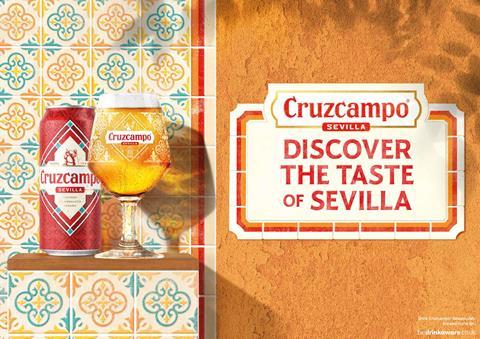
Supplier incentives
From a supplier standpoint, meanwhile, lower-abv innovations are appealing for two main reasons. First, due to reforms to alcohol duty last August, makers of booze face lower rates of tax on weaker drinks, giving them a stronger incentive to innovate at a lower abv.
And brands have clearly taken advantage, according to a study in science journal Public Health last month. It analysed the strength of 279 beers, 80 ciders and 192 spirits in Tesco, and showed the average abv of these drinks fell 0.01%, 0.04% and 0.05% respectively in the five months to October 2023.
Tax was not the driving factor in Nice’s decision to launch a range of lower-alcohol wines earlier this year. But co-founder Jeremy May acknowledges it was why the brand chose 3.4% – the threshold for the discounted tax band – for its ‘session wine’. “Once those reforms came in, it was an absolute no-brainer,” he says.
Read more:
-
Britain’s Biggest Alcohol Brands 2024: The top 100
-
Sunny weather could buoy food & drink sales. It can’t come soon enough
-
Eisberg doubles alcohol-free wine capacity
-
Unlocking consumer choices within beers, wines & spirits
The second reason lower-abv products appeal to suppliers – especially those in wine and spirits – is taste. Creating products that deliver the flavour mindful drinkers expect is much easier with some alcohol than none at all.
“We didn’t have any interest in developing a zero-alcohol wine,” May says. “Wine is one of the most complex liquids to create, and making a 0% product that tastes anything like wine is basically impossible.”
Taste was also the driving force behind the launch of Quarter Proof. The brand’s 15% abv spirit drinks inspired by gin, vodka and tequila are sold by retailers including Whole Foods Market, Berry Bros & Rudd and Ocado.
“We wanted to find that perfect balance between flavour and functionality, so you can enjoy more of what you love without compromising on the next day,” says co-founder Rohan Radhakrishnan.
But are people buying it?
Because the definition of ‘mid strength’ varies depending on type of alcohol, assessing market performance is not easy. But there are certainly a number of success stories. Big brand extensions Corona Ligera and Foster’s Shandy, for instance, have delivered value sales of £1.3m and £1.1m respectively since launching in February [NIQ 52 w/e 20 April 2024]. Meanwhile, Carlsberg’s reformulated 3.4% Pilsner has added an extra £4m on volumes up 0.9%.
Challenger brands like Small Beer, Quarter Proof and Nice remain a way off such figures, but all report strong sales growth.
Grundy says Small Beer’s sales for 2024/25 are predicted to grow 80% year on year, and he sees no reason session options couldn’t take 30% to 40% of the market. “If you go back 400 years ‘small beer’ was a part of everyone’s day to day life. I’m not saying we will return to that but it’s got huge potential”.
May at Nice is similarly bullish. “There’s a clear, latent demand,” he says. It has “the potential to be bigger than the out-and-out low & no category”. He points to Nice’s session wines, which outsold the brand’s full-strength lines by a multiple of six in the six weeks after launch.
To really kick on, session innovation will need the support of major retailers. Mid-strength beers appear to be enjoying the most backing so far. Corona Ligera is stocked nationwide with Tesco, while Foster’s Shandy is in Tesco, Morrisons and Asda [Assosia].
Who’s down?
65 (56)
Wolf Blass ↓ 21.4%
71 (64)
Magners ↓ 15.7%
72 (66)
Mud House ↓ 15.5%
67 (62)
WKD ↓ 14.7%
75 (67)
Whitley Neill ↓ 13.4%
Small Beer is also making in-roads, having sealed a listing for its stout in over 200 Waitrose stores and grown distribution of its pale ale and lager with the retailer in the past six months. Grundy also praises the likes of Waitrose, Ocado and Majestic, which have embraced session strength innovation, he says.
“There are others who are not quite sure where to position it and are sitting on their hands for now, and that’s a shame because the consumer is thirsting for it.”
The challenge of how and where to market mid-strength in-store is one that wine is also grappling with. Consequently, although consumers are aware products exist, “distribution is relatively poor at the minute”, says Raine at Concha y Toro UK.
For Nice, activations will include a gondola in Co-op stores this summer. It will showcase the full range and stop shoppers “getting lost in the wine aisle”, says May.
For this kind of activity to be a success, however, brands need to “shout about abv front and centre” so consumers don’t end up grabbing a product they don’t want, he adds.
“We’re having to put so much point-of-sale information in to make sure no one has any doubt about what they’re buying.”

Spirit drinks face issues
Makers of lower-alcohol spirits face challenges of their own. As a result of laws governing the abv of whisky, gin and vodka, weaker products must refer to themselves as spirit drinks. For established brands like Tanqueray and Smirnoff, this hasn’t prevented lower-abv NPD. But for brands starting out, explaining the proposition is tricky.
“We’ve distilled spirits in the traditional way and re-engineered them for a modern drinking occasion. The frustration is the bureaucracy as to what we can call them,” says Quarter Proof’s Radhakrishnan.
With the definition of a spirit drink set at a minimum of 15% abv, Quarter was last month forced to increase its products from 12% to 15% abv – a move Radhakrishnan feels was counterintuitive to its moderation mission. The issue also cost Quarter Proof its Amazon business last autumn. “Instead of being focused on building our brand and the category, we’re in disputes about what we can and can’t call our products,” he says. “We’re trying to promote more mindful drinking, and yet we’re being held back because of age-old categorisations.”
Other spirits brands have taken a less controversial route into the session craze: RTD cocktails. They can help distillers tap new consumption moments and demand for more moderate serves, says Emma Hamilton, co-founder of vodka company Edwards 1902.
For its RTD launch in March, Edwards teamed up with posh soft drinks maker Bottlegreen. Hamilton says it’s “really hard to break into RTDs as an independent”, but by partnering with a household name, Edwards has been able to launch at scale, securing listings with Sainsbury’s and Morrisons.
“We saw M&S really kickstart the RTD movement, and it doesn’t seem to be going away,” she says. “It’s about making sure there’s something for everyone.”
![BBAB_RGB_3[31]_PINK TINT](https://dmrqkbkq8el9i.cloudfront.net/Pictures/480xany/3/3/8/328338_bbab_rgb_331_pinktint_455842.jpg)
The winners and losers
In terms of absolute gains, beer brands dominate this year. Stella Artois, Madrí Excepcional, Corona, Guinness and Cruzcampo have added a combined £173.7m.
They’ve all grown volumes too, putting an extra 32.6 million litres of lager and stout through tills.
Their success is down to a number of factors – from marketing and innovation to novelty and moderation.
In the case of Guinness, for instance, its alcohol-free line, o.o%, was a major contributor to growth. It generated an extra £17.2m – more than half of the overall brand’s £31.7m gain.
Cruzcampo, meanwhile, benefited from a hit on-trade launch in April 2023, four months ahead of its grocery debut. The larger craze for continental brews – such as Corona and Madrí Excepcional – also contributed to the brand’s gains. It’s shifted 10.7 million more litres. That’s the biggest absolute volume gain in this report.
The year, however, has not been kind to traditional lager brands. Take Foster’s, which has made the second-biggest value loss of £22.3m. Or Carling, Britain’s second-biggest lager. It’s shed 22.7 million litres – the largest absolute loss of volumes.
In value terms, however, Gordon’s took the biggest hit. It’s lost £26.7m on a 12% decline in volumes. That follows the £72.8m decline we reported in 2023, as the British gin bubble finally burst.





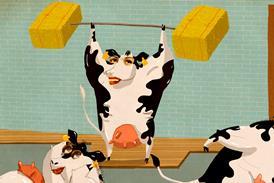


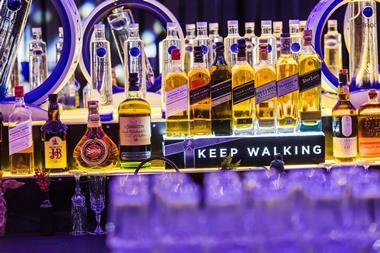
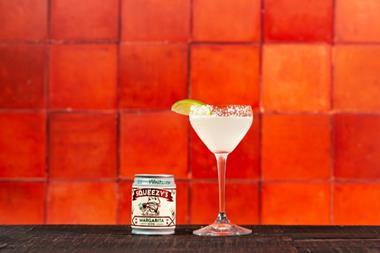
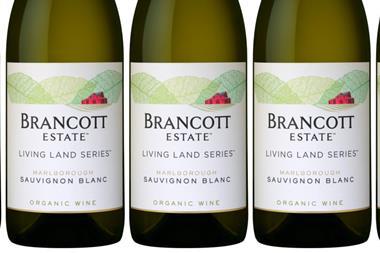

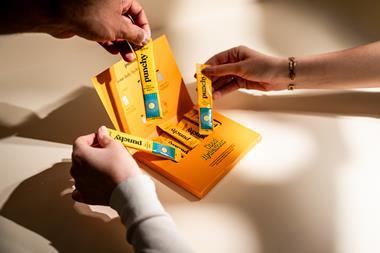

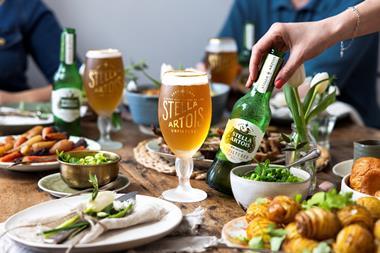


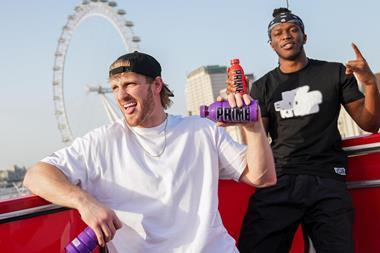

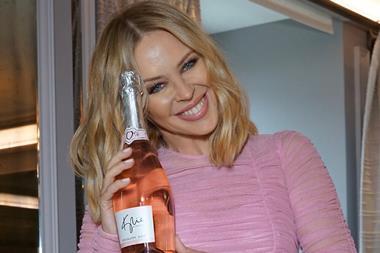
No comments yet